Art History 1 Final (new)
1/119
There's no tags or description
Looks like no tags are added yet.
Name | Mastery | Learn | Test | Matching | Spaced |
|---|
No study sessions yet.
120 Terms
Depictions of religious figures. They often are forward facing, feature a halo, use gold leaf, and have specific hand gestures. Kept on hand to feel protected and when praying.
Icons
Little of it. Depicts its religion
Jewish art
Interroping element, sun ray pattern, detailed mosaics
Byzantine art
Studied Roman artwork, but less focus on classical/naturalistic work until the Renaissance Period. Usually shorter
Christian art
Reverence for the word: Islamic Text from Qur’an
Imagery outside of the human figure (if religious, not secular): used vegetal/floral imagery and patterns, along with geometric patterns
Equality of genres: All forms of artwork given the same respect
Unifying themes in Islamic art
can have columns, arches, domes, colorful patterns, alternating colors of voussoirs, bright cool colors
Islamic architecture
Debate over whether icon imagery could be used
Iconoclastic Controversy
Didn’t like icon imagery, felt it went against the Bible, destroyed art with icon imagery
Iconoclast
Likes icon imagery, felt it helped in worshiping and teaching, and could intervene and assist the power of prayer
Iconophile
What religion were the Eastern Empire/Byzantine?
Orthodoxy
What religion were the Western Empire?
Roman Catholic
The division of Christianity into Catholicism and Orthodoxy.
Great Schism
What are the 3 unifying themes in Islamic art?
Reverence for the word, imagery outside of the human figure, and equality of genres
Rent to a mosque, sometimes was art
Wafts
What was found in secular Islamic art
Humor
Is Islamic art only religous?
No

What is this?
Four-iwan mosque
Holds all men for the noon Friday prayer
Hypostyle mosque
Used to identify structure in a mosque, housing for the person who chants
Minaret
How was praying in a hypostyle mosque done?
In unison
Wall of the mosque which faced Mecca
Qibla wall
Nook/indent, holds the Qur’an under dome
Mihrab
How many sides of a hypostyle mosque had entry portals?
3
Where in the mosque held prayer?
Open courtyard
Pointed arch opening
Iwan
Largest iwan, facing Mecca
Qibla iwan
The normal iwans
Lateral iwan
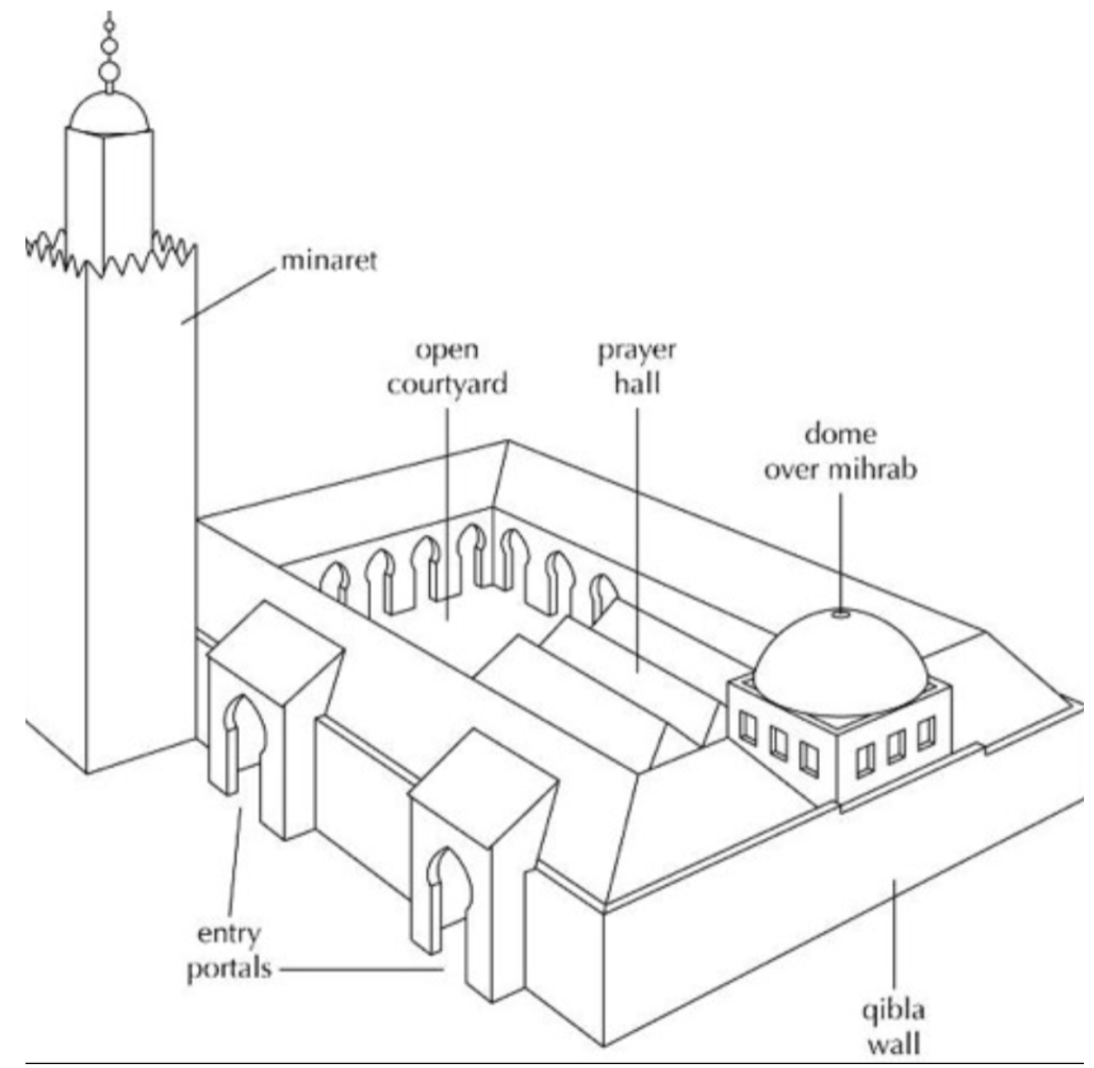
What is this?
hypostyle mosque

Who created the central plan
The Byzantine
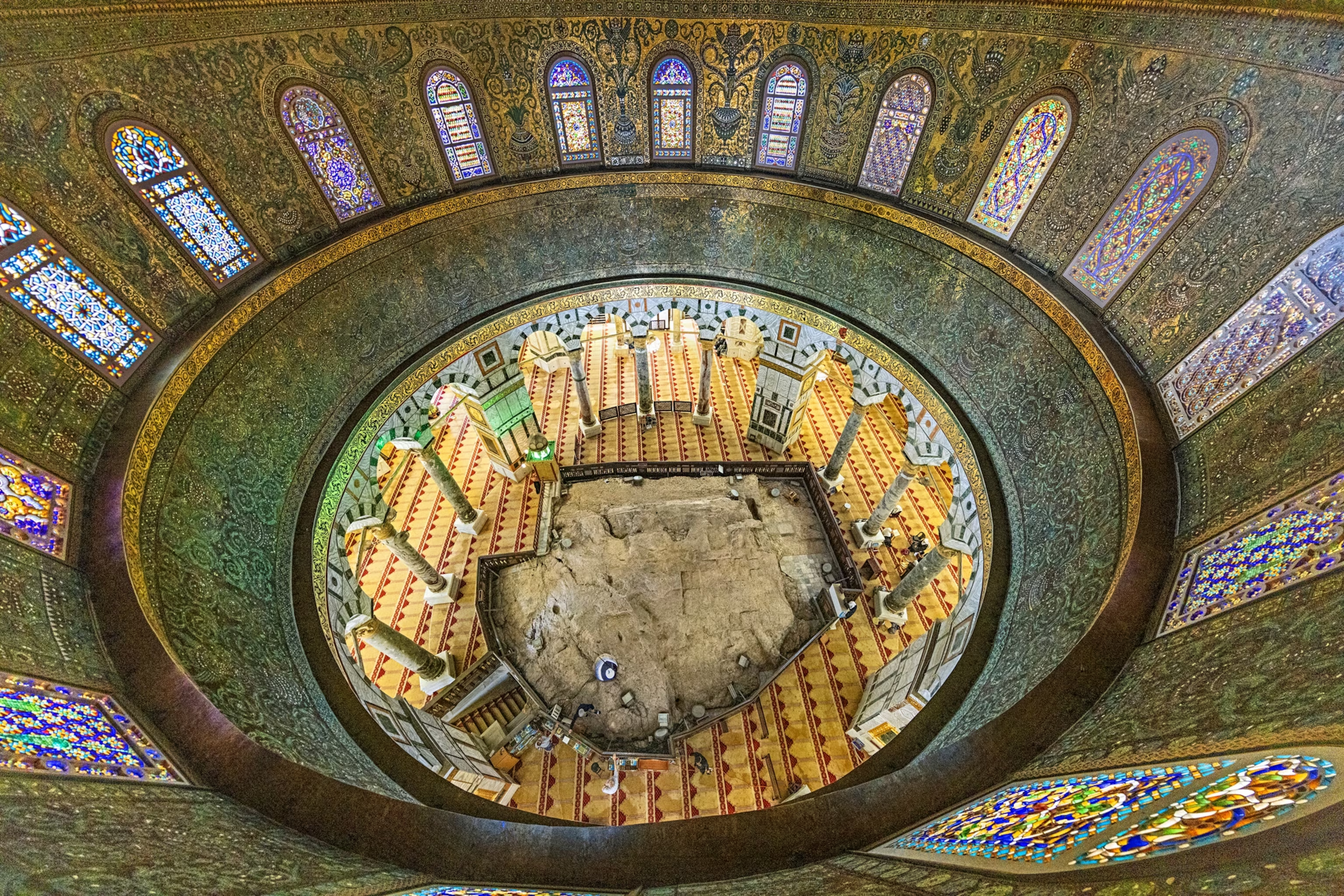
What structure is this? It is believed to be where Mohammad would sacrifice his son. It is the earliest known Islamic structure that’s survived to this time
The Dome of the Rock
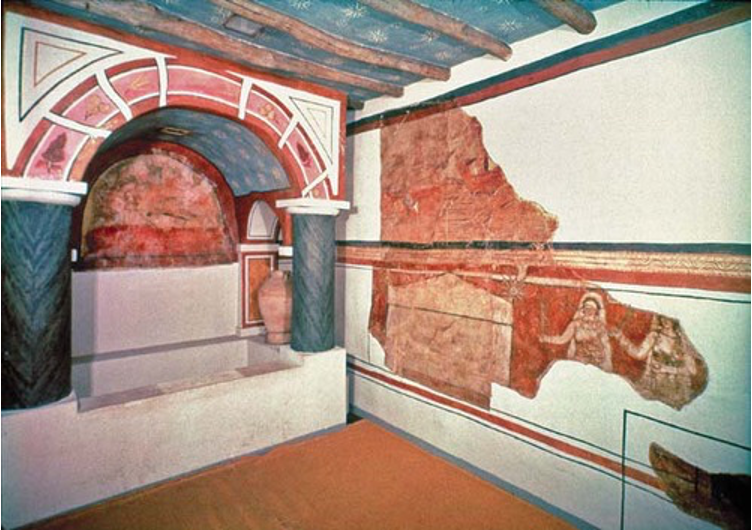
What is this? In Dura-Europos, this room was preserved since it was buried in a bunker. Held private worship. Had Christian and early Jewish imagery. Ex. Adam and Eve
Model of Baptistery, the Christian Meeting House
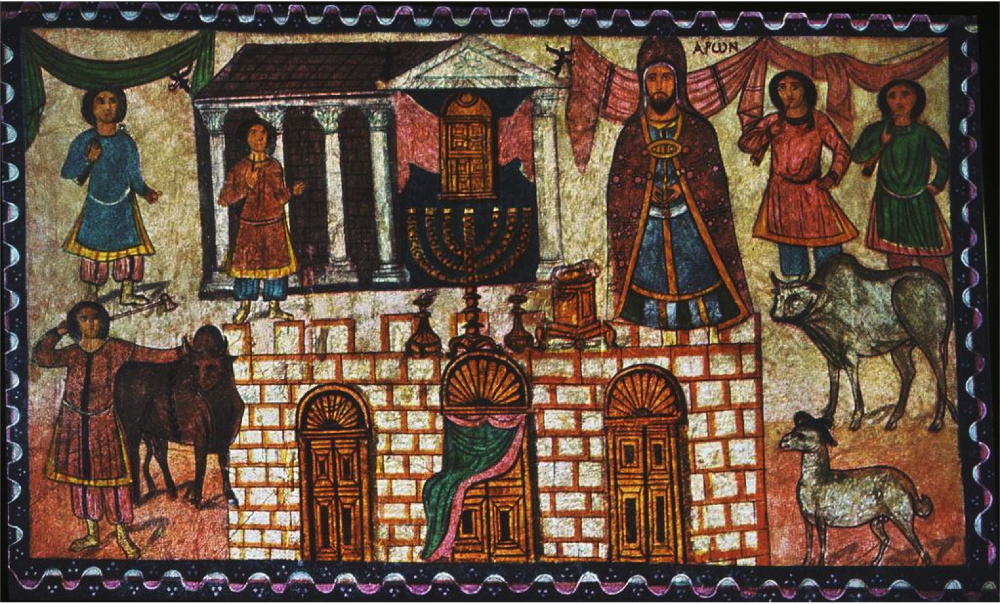
In Dura-Europos, up until this point there was no proof of Jewish art because it was assumed they did not depict religious figures. Has Jewish imagery like a menorah. Uses scale to tell importance. Features classical elements in architecture like columns and arches
Consecration of the Tabernacle and Its Priests

What is this and what plan is it?
Interior of Old St. Peter’s, basilica plan
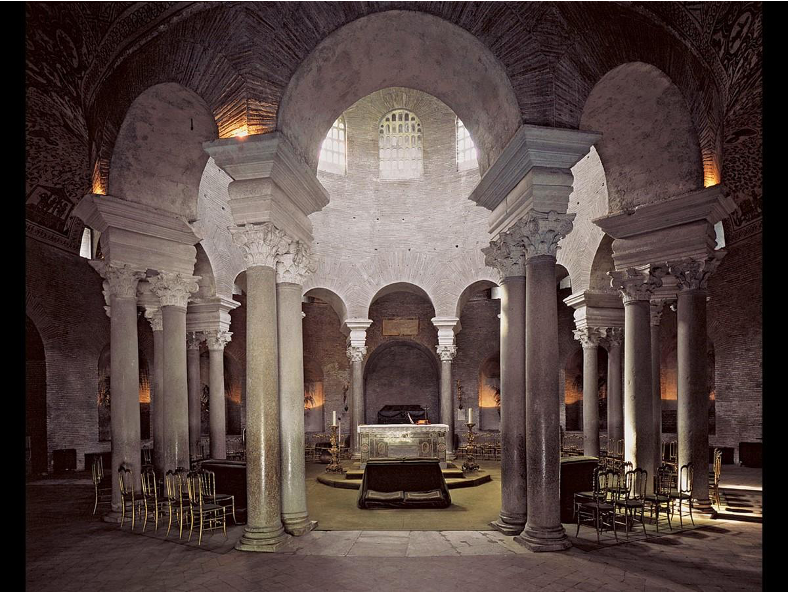
What plan is this?
Circular/Central plan
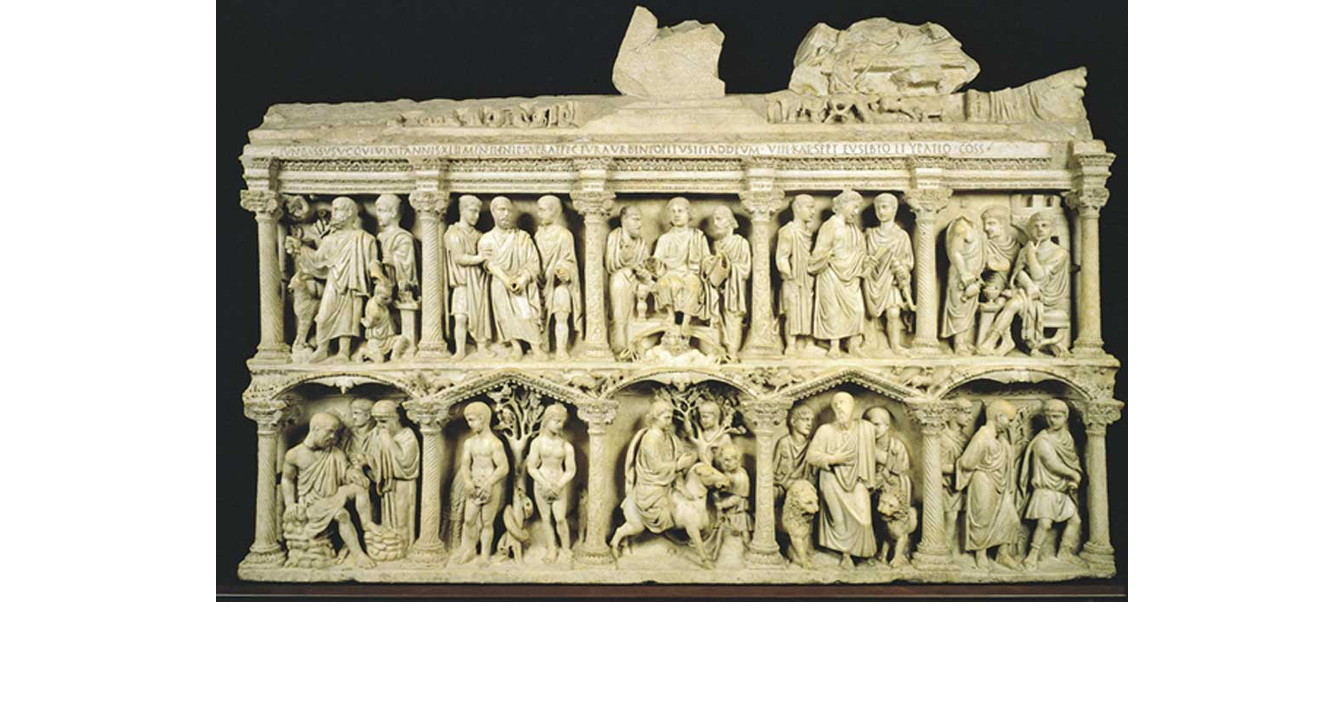
The tomb of a government official. The tomb has depictions of Christian imagery, which was important because he was of high status and was recognizing that we was Christian. Christianity was usually practiced in private. Human figures were less realistic and shorter, however the tomb has classical element such as contrapasta, nice drapery, and classical architecture.
The Sarcophagus of Junius Bassus
Promoted Christianity which promoted public Christian churches. Featured Christian imagery on sarcophagus. Founded Constantinople
Constantine
A town, some of it was saved due to it being buried. When discovered, they found examples of Christian imagery and early jewish art.
Dura Europos
Featured interwoven patterns, animal style, and horror vacui. Proportions were less realistic
Medieval art
Animalistic imagery usually combined into interwoven patterns
Animal Style
fear of empty space, many pieces used every inch of surface
Horror Vacui
Illustrations in books, usually religious. Were used to spread religion. Could tell stories to those who couldn’t read
Illumination
Verticality, lightness
1. Actual sunlight being let in
2. Physical lightness of the building.
Had spires, buttresses, and many windows. Had more uplifting imagery.
Gothic architecture
stumpier, heavier, shorter, blockier. Barrel vaulted nave was a technological advancement. Also used compound piers
Romanesque architecture
A central column with other columns attached to it. Sometimes they had capitals. Were heavy looking.
Compound piers
An artistic tradition that is a combination of previous ideas under a new ideology
Syncretism
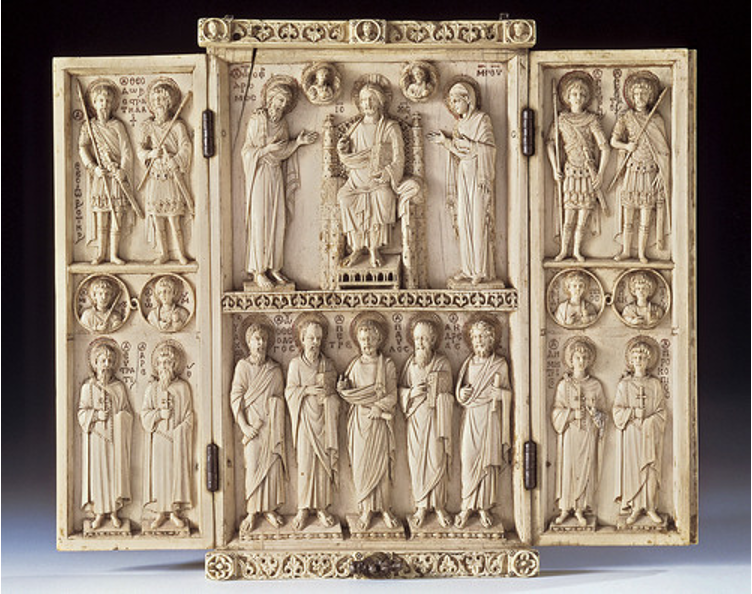
What medieval piece is this? It was similar to icons. It would have been taken on a trip to aid in a safe journey. Its proportions aren’t like the classical era. There are classical elements like contrapposto and drapery. It is named after the family that owned it.
Harbaville Triptych
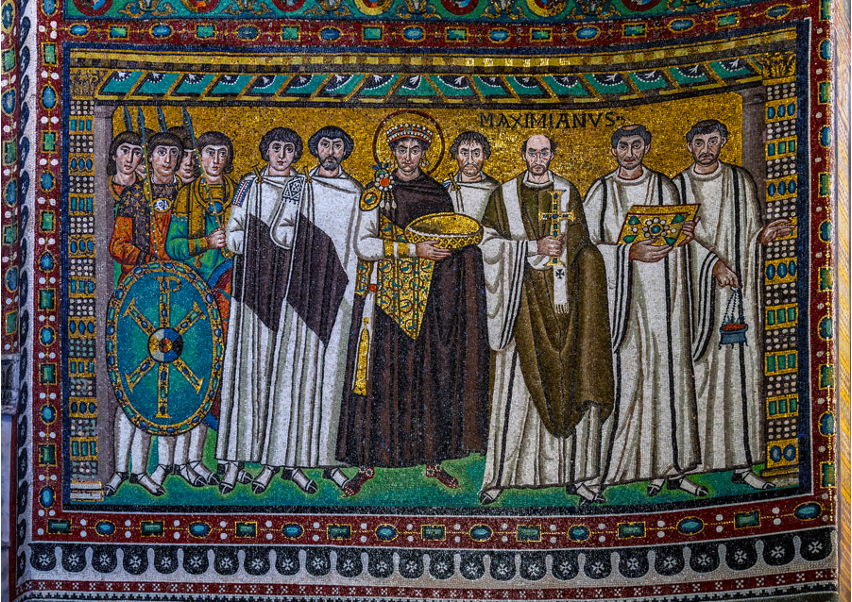
What early Christian piece this? Justinian depicted himself as Jesus in this piece. Many rulers are depicting themselves as a god or a middleman to the gods. This piece is an example of divine kingship. Is Byzantine art. Figures are beginning to lengthen.
Emperor Justinian and His Attendants
Successor to Constantine, Ruled the Eastern Empire/Byzantine
Justinian
Union of political or spiritual authority, like a middle man
Divine Kingship
Human figures are stubbier, less realistic than in the Classical period. However, they portray different poses we’ve seen - contrapposto, nice drapery, classical architecture.
Early Christian Art
What are the parts of the basilica plan?
Nave, alter, apse, ambulatory
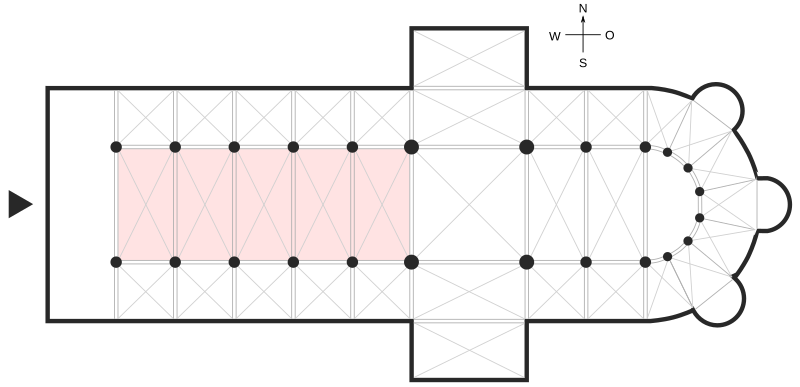
In the basilica plan, the central aisle of a church
Nave
In the basilica plan, on the top of the nave of a church
Altar
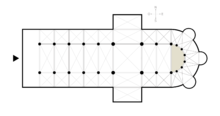
In the basilica plan, the area behind the altar in a church, is usually a semicircle
Apse

In the basilica plan, area around the apse
Ambulatory
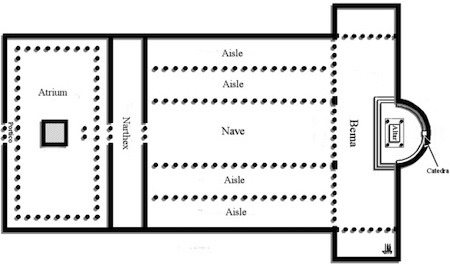
Western Roman Empire’s church plan
Basilica plan
Byzantine’s church plan
Circular/central plan
What is the name of the Eastern Roman Empire?
The Byzantine
What city does the word Byzantine derive from?
Byzantium
Monastery, private church
Abbey
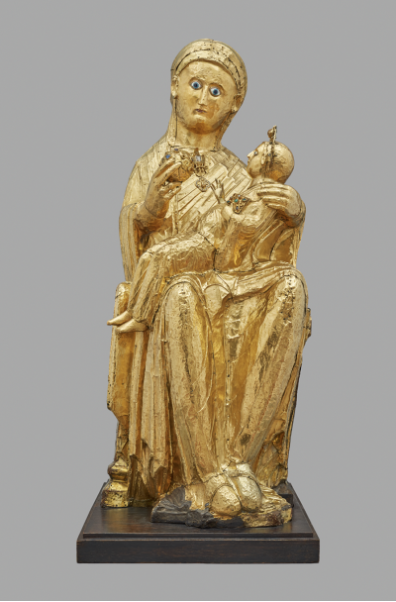
What medieval piece is this? It is possible reliquary since it had an interior wooden core. It s adepiction of Jesus and Mary.
The Virgin of Essen
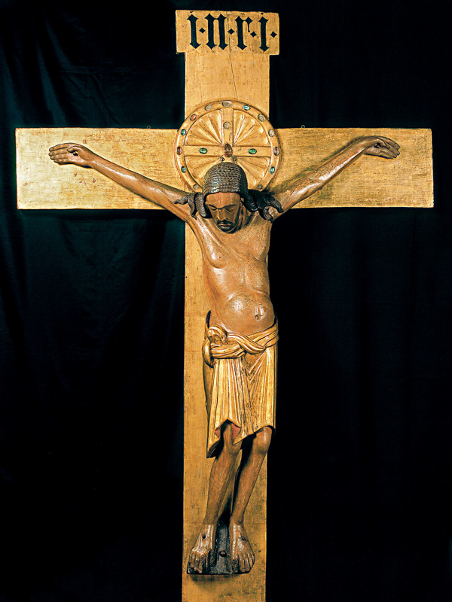
Medieval piece. A possibly reliquary - had an opening. A depiction of Jesus on The Cross
Gero Crucifix
Romanesque period, travel to see various religious sites and relics.
Pilgrimage
What caused the popularity of pilgrimage?
More trade and ownership
What social system was popular before the Romanesque period? This was before people owned more.
Feudalism
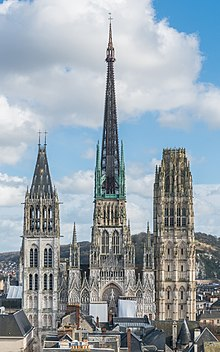
In gothic architecture. Pointy part on a tower. Taller and sometimes more decorative
Spire
In gothic architecture, an exterior column
Buttress
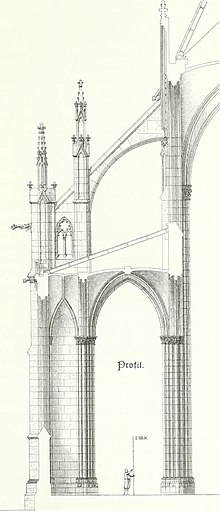
In gothic architecture, connected to buttress and the building, feeds weight to the actual buttress
Flying buttress
In gothic architecture, what gave walls the ability to have more windows and open spaces?
Buttress
What period had art depicting damnation?
Romanesque
What period had art depicting more uplifting Christian imagery?
Gothic
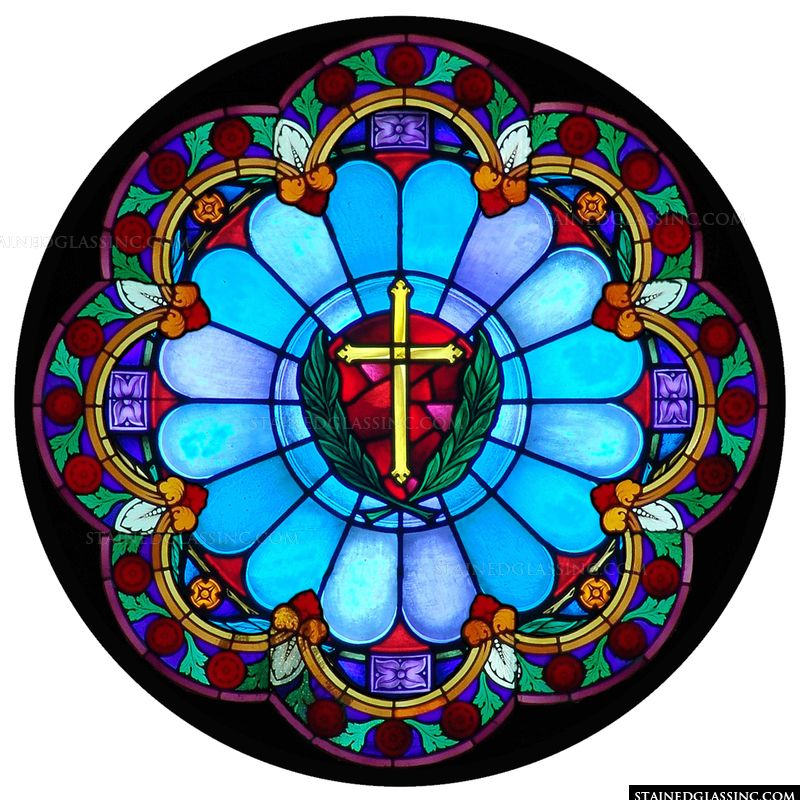
In gothic architecture, round stained glass window
Rose window
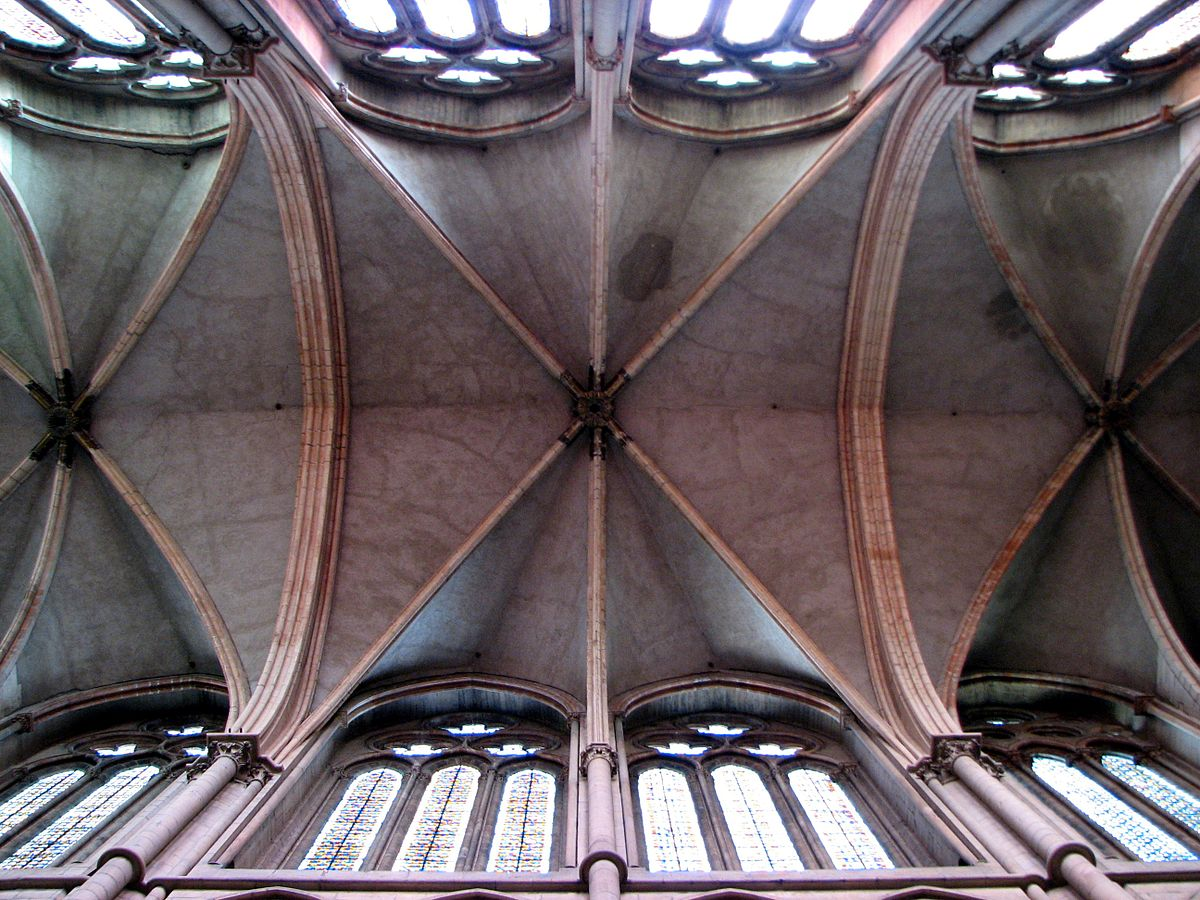
In gothic architecture, groin vault that has six sections in a bay, differed from usual four.
Sexpartite groin vault
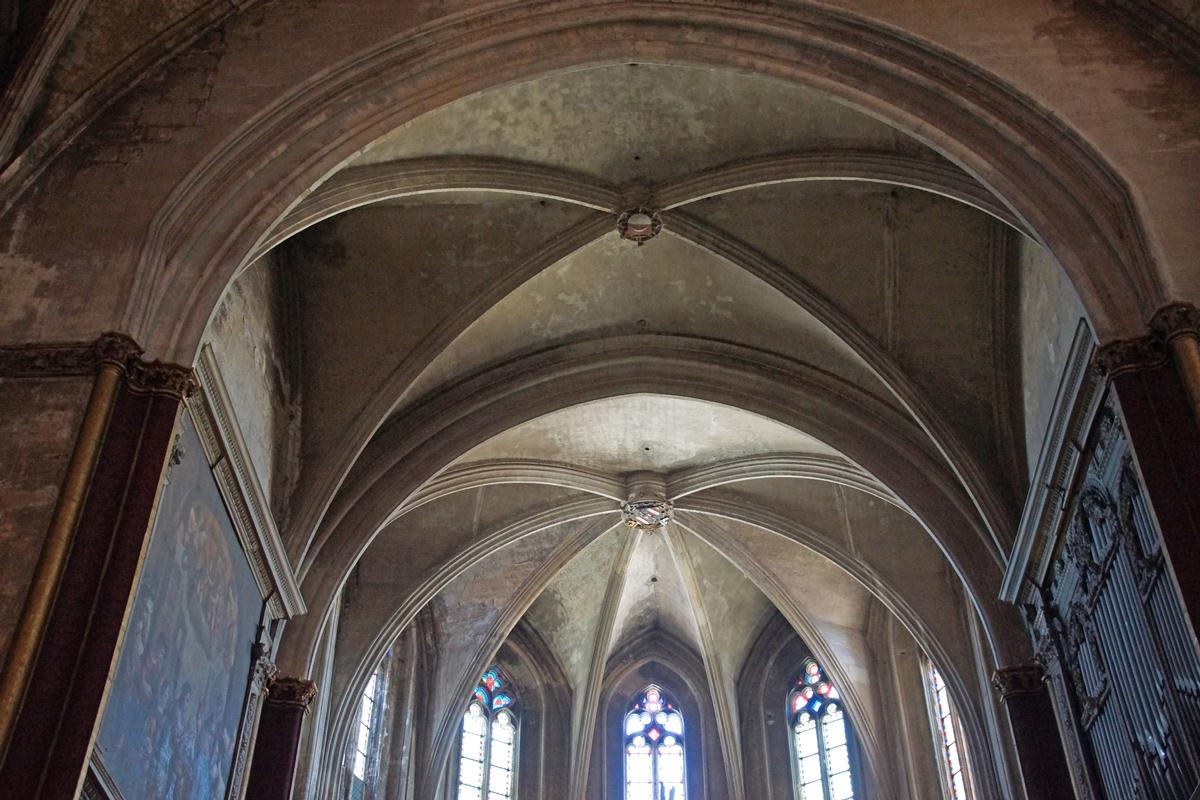
In gothic architecture, groin vault that has four sections
Quadripartite groin vault
What does Romanesque literally mean?
In the Roman manner
Mosque that used to be a Christian church. Circular plan. Constantine started its production, and then Justaintine. Christians added domes, arches, columns. Later added Islamic architectural elements like minarets, detailed patterns, and script.
Hagia Sophia
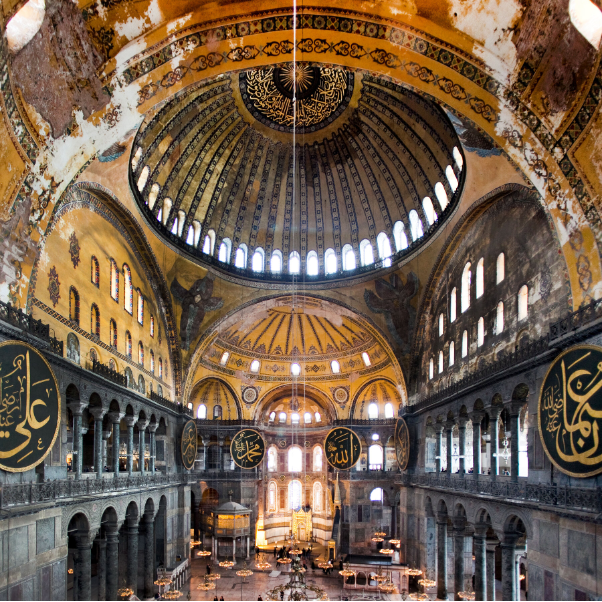
What building is this?
Hagia Sophia
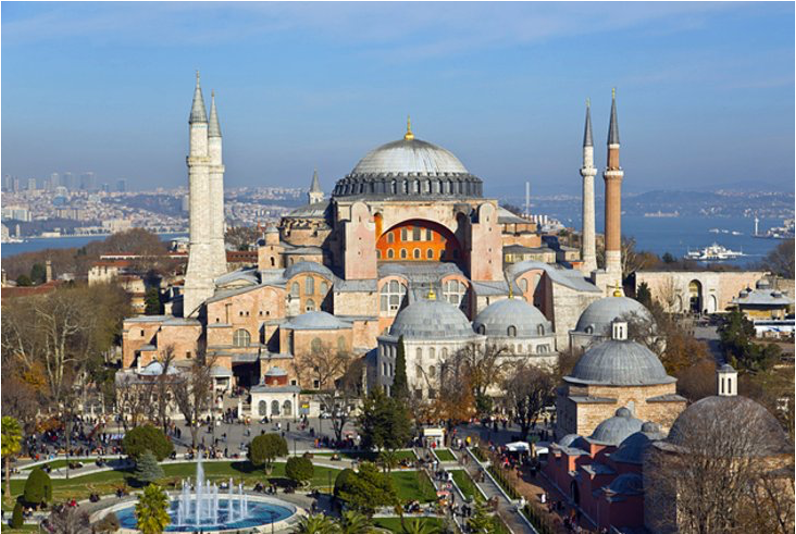
What building is this?
Hagia Sophia
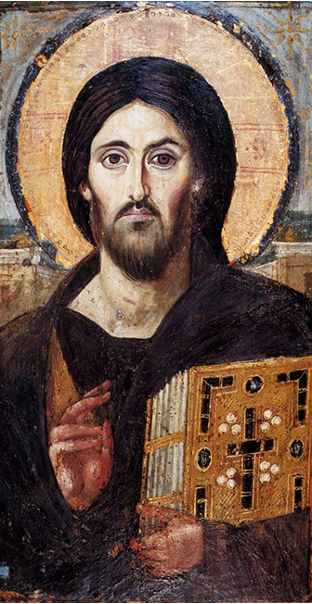
What kind of artwork is this? (Simply entitled Christ)
An icon
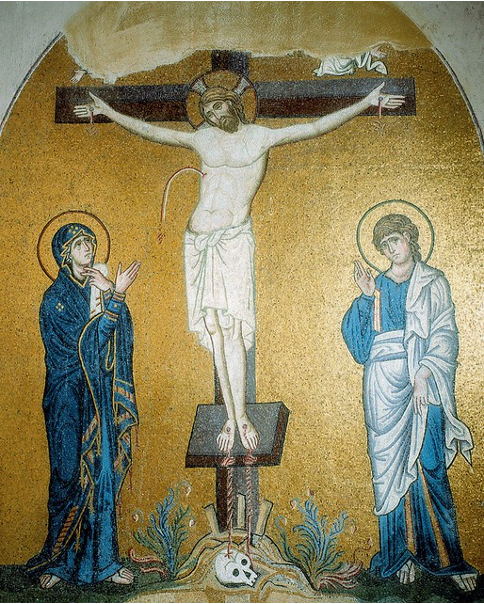
What early Christian piece is this? It’s the first artwork known to depict Christ on the cross suffering. A mosaic with a memento mori. Features icon elements.
The Crucifixion
An artistic trope serving as a reminder of death. Sometimes depicted as a skull.
Memento mori
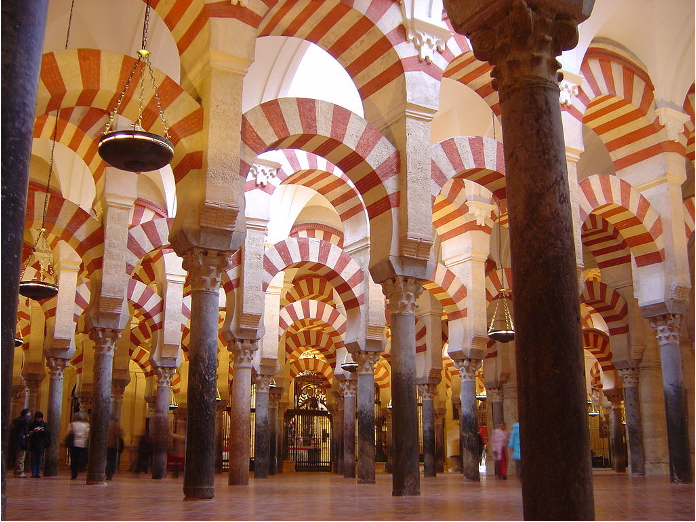
What structure is this?
The Great Mosque
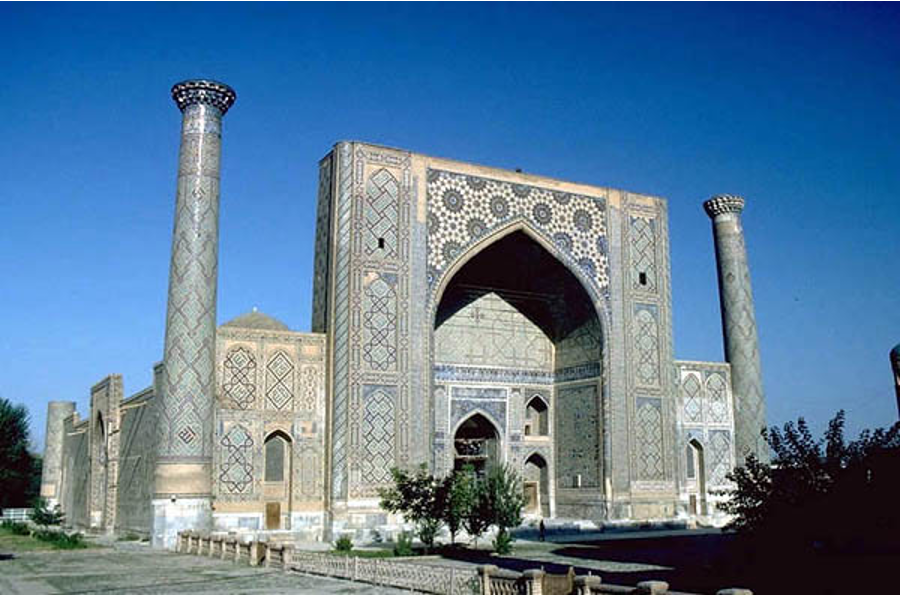
An Islamic prayer hall, features iwans; floral,geometric, vegetal imagery; and bright blue colors
Madrasa of Ulugh Beg
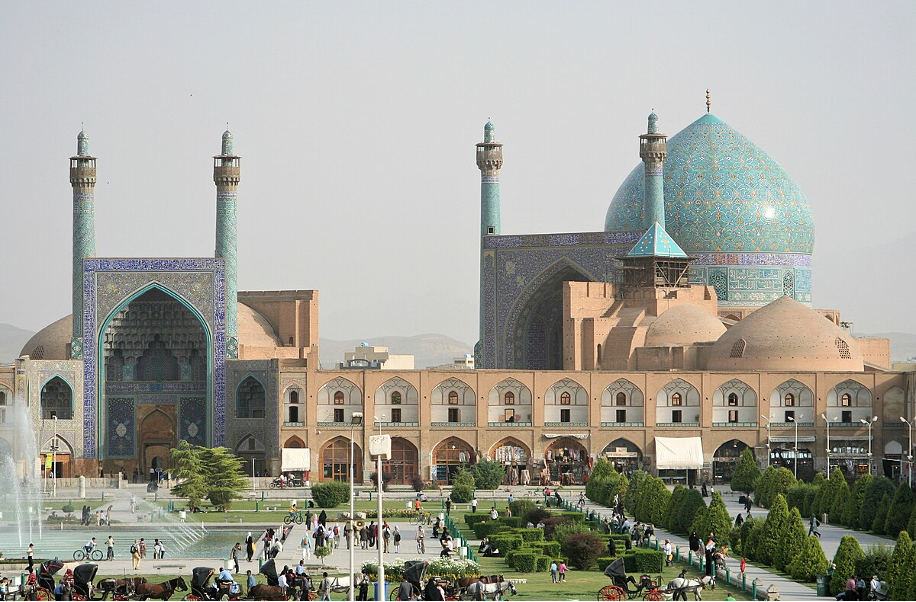
Mosque with various Islamic features (floral and geometric patterns, etc). Also has stores in it
The Royal Mosque of Shah Abbas
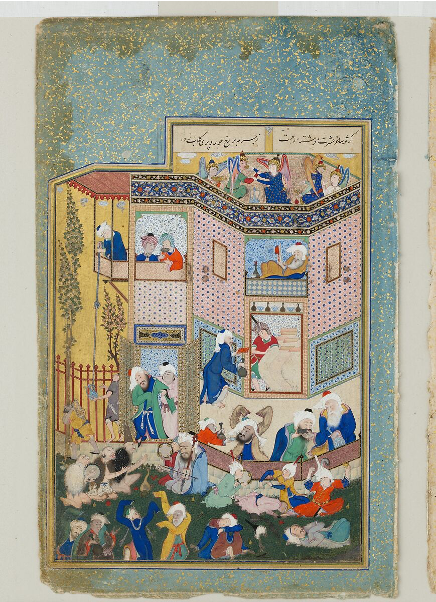
What is this? Secular Islamic art featuring humor and human imagery
Allegory of worldly and Otherworldly Drunkenness
Who was Constantinople named after?
Constantine
The Eastern Roman empire’s capital. Used to be called Byzantium
Constantinople
Genre of gothic architecture created by the king, is extremely concerned with light
Raynonnat/court style
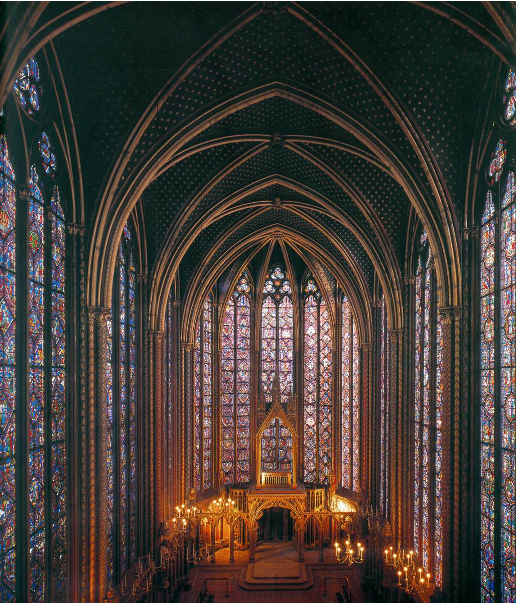
Second floor of chapel with large windows of stained glass, is in Raynonnat/court style
Sainte-Chapelle Upper Chapel
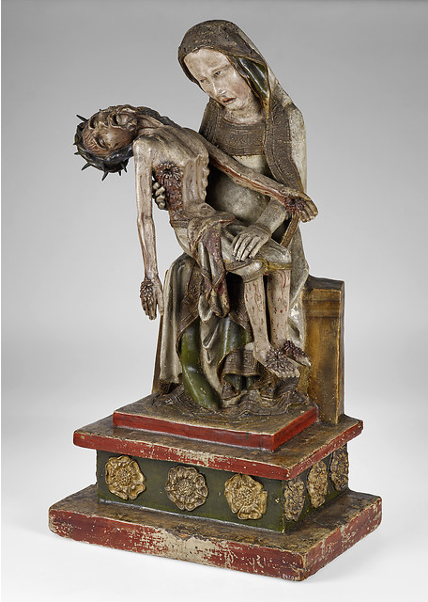
What piece is this? Its a Gothic piece, possibly a reliquary, that shows extreme emotion between Jesus and Mary
Roettgen Pietà
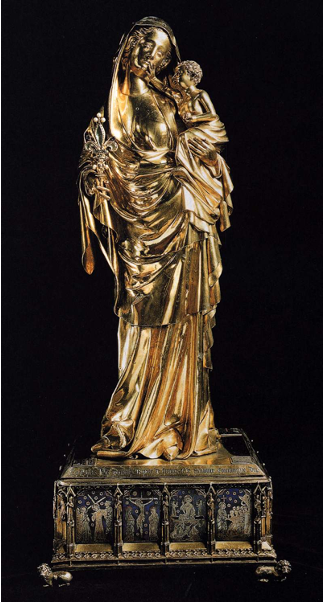
Gothic piece, golden statue of Mary and Jesus, good craftsmanship and drapery
Virgin of Jeanne d’Évreux
What invention made pilgrimage easier in the Romanesque period? Sometimes people had to pay to use them.
Bridges
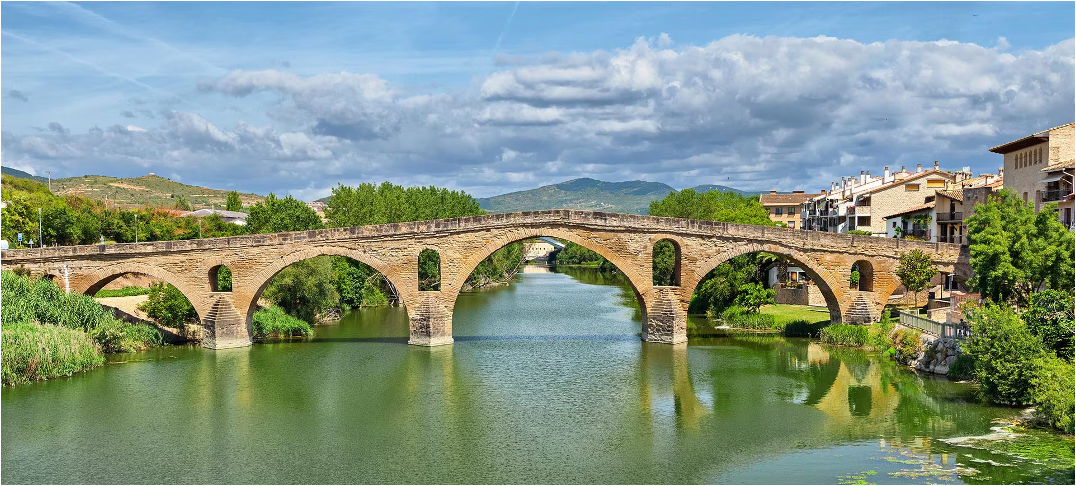
What is this?
Bridge over the Arga River
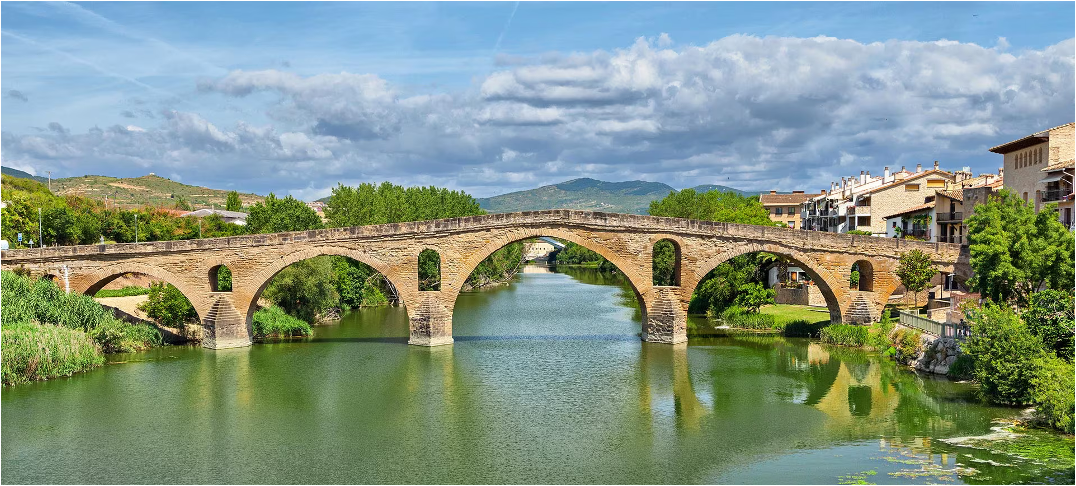
Architectural element used in bridges during the Romanesque period.
Spandrels
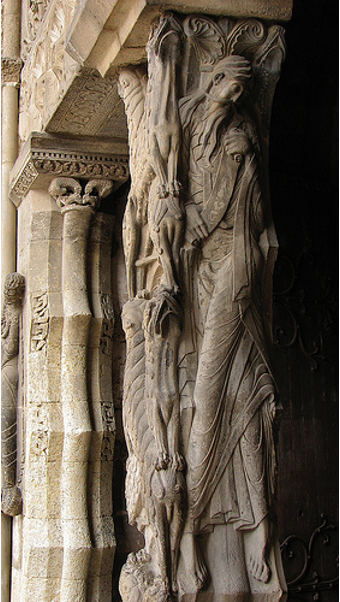
Elongated human form in between doors during the Romanesque and Gothic period
Jambs
In Romanesque architecture, decorative section above lintel
Tympanum
In Romanesque architecture, sculptural element between entry doors
Trumeau
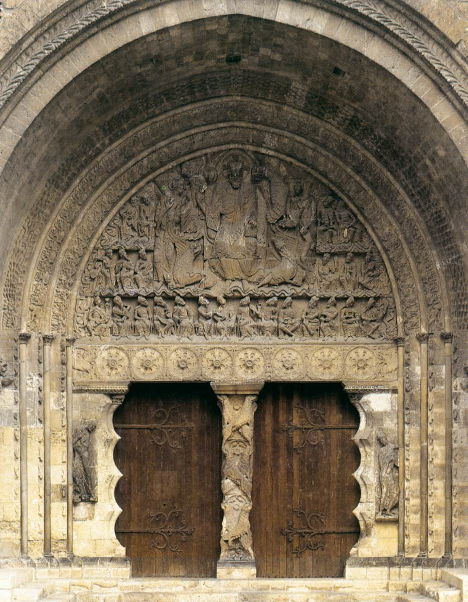
Romanesque architecture that features trumeau, Tympanum, and door jambs
South Portal with Second Coming of Christ
In what period were viking ship burials popular? People of importance sent off in viking ship and with objects which they thought would help them in the afterlife. They were raided often because of these various items
Medieval
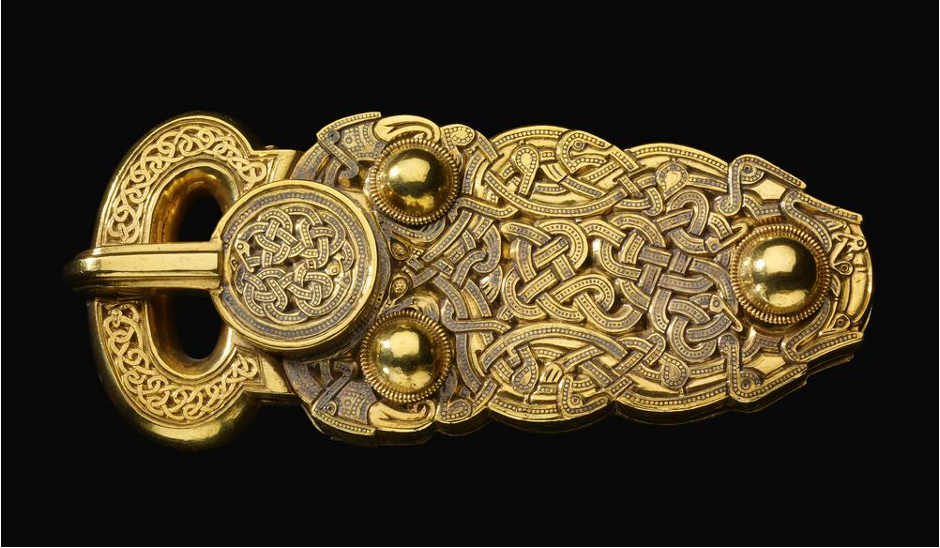
What Medieval piece is this? It features animal style and horror vacui. It was found in the Sutton Hoo Burial
Gold buckle